I have decided to stick with the Salmon Hole as my phenology spot for this semester, and returned for the first time today to see what changes there were over the New Year and if I could spot any animal tracks. It snowed last night, so there were tons of fresh tracks in the snow from a myriad of animals, including dogs. It was hard to identify some of the tracks because the snow is a few inches deep so it’s hard to see their toe prints. These were a few of the tracks I found:
Here we have an exotic dog print:
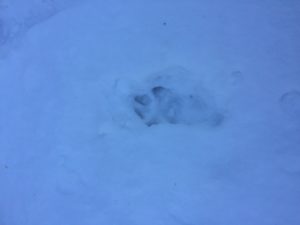
I think this is a gray squirrel print but I am not 100 percent sure
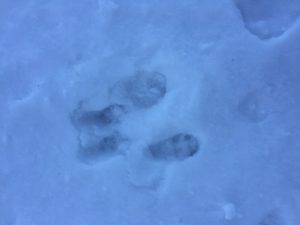
More gray squirrel tracks
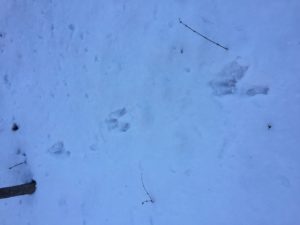
Unfortunately I couldn’t identify these
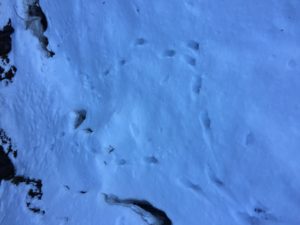
Potential deer prints:
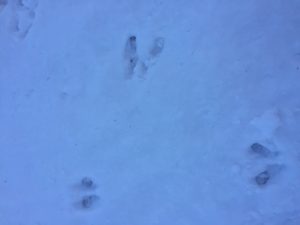
Aside from animals, it was hard to identify many trees because a lot of them were frozen over or dead and had no branches and very little buds, however I was able to identify: a willow tree, american beech, red maple and lastly yellow birch trees. Here is are some of the tree twigs I saw:
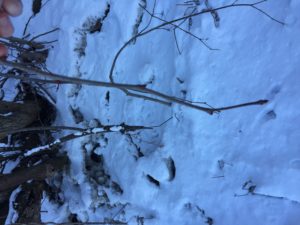

I have also sketched out the willow tree twig:
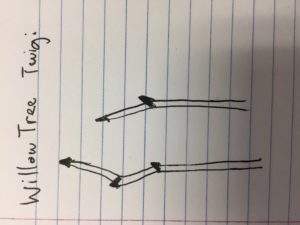
The last time I returned to the Salmon Hole was in December, so although there was some snow on the ground then it was almost completely unrecognizable when I went there today. Firstly, I have never actually seen animal tracks at the Salmon Hole. This may have been because I was never really looking for them and assumed that all tracks were dog tracks, but since doing the animal tracking lab I have been more conscious of tracks. Thus, I ended up seeing many different tracks today. Furthermore, the area where there are a lot of rocks which is sometimes dry and sometimes has water flowing was completely iced and snowed over, so it was hard to tell whether there was water flowing in certain places or not. Aside from that area being iced over, the rocks and the trails were as well, and the ice on the trail formed circles so that it almost looked like stepping stones of ice:

Here is the area with the rocks that was iced over:
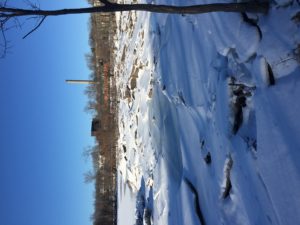
Aside from the area where there was water flowing which was at the top of the Salmon Hole, much of it had frozen over, and there were little areas in which you could see only a thin layer of ice or could actually see water. It appears as though the water likely did not freeze at the same time, because there were many sheets of ice pushed up against the rocks, meaning that small sections of the water would freeze and then would move with the wind up against the rocks. Of all the trips to the Salmon Hole I have made, this one was probably my favorite because it was so exciting to see it completely transformed with ice and so many signs of life from the animal tracks.
Recent Comments